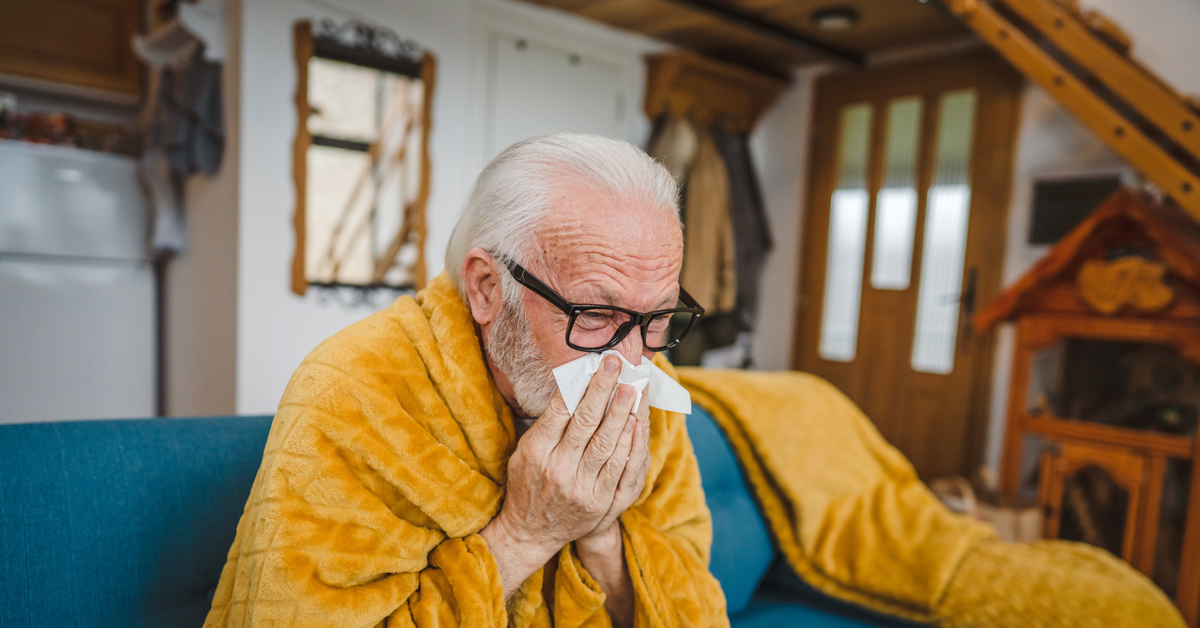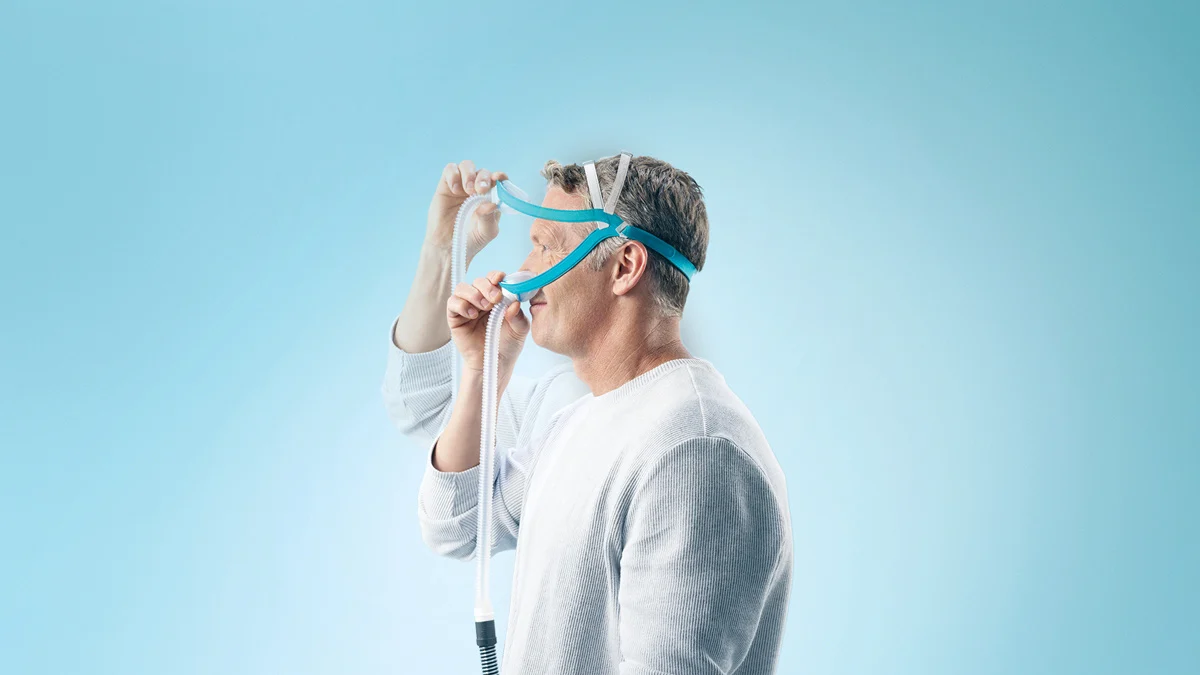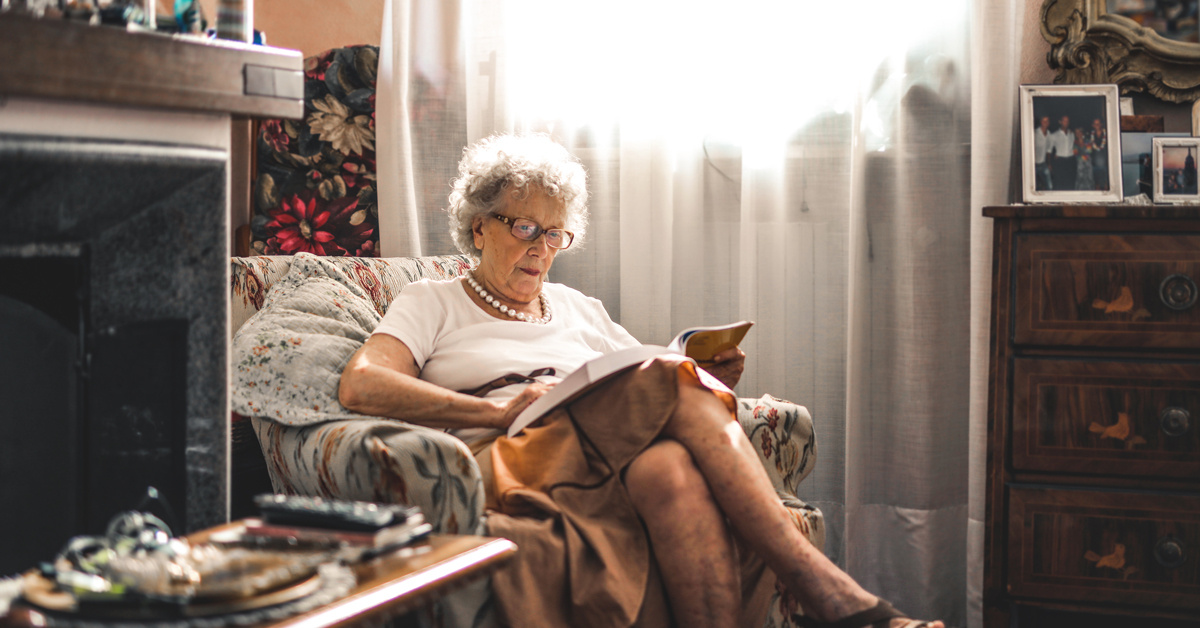More than 22 million Americans and more than 100 million people worldwide suffer from apneic episodes. But unlike other conditions, where patients can verbalize the symptoms they are experiencing, people who have sleep apnea are typically unaware since they are sleeping through these episodes.
Apria created this guide to help healthcare providers recognize and treat sleep apnea.
The Three Types of Sleep Apnea
Obstructive Sleep Apnea (OSA)
The most common form of sleep apnea, OSA occurs when there is a blockage at the back of the throat, causing a temporary lapse in breathing. The brain senses this and briefly wakes the patient to reopen the airway. This pattern can repeat itself five to 30 times or more every hour throughout the night.
Central Sleep Apnea (CSA)
CSA affects about 0.9% of adults over the age of 40. Unlike OSA, the airway is not blocked; instead, the brain doesn’t send proper signals to the muscles that control breathing because of problems with the body’s central nervous system. As a result, the patient makes less effort to regain breathing, producing slower, shallower breaths.
Mixed Sleep Apnea (MSA)
Also called complex sleep apnea and treatment-emergent central sleep apnea, this type occurs when someone has both obstructive sleep apnea and central sleep apnea.
Your Patients Who May Be at Risk for Sleep Apnea
Obstructive Sleep Apnea Risks
Many factors may increase the risk of airway blockage and OSA:
- Anatomy: The position and size and of the patient’s neck, jaw, tongue, tonsils, or adenoids can interfere with airflow.
- Obesity: Being overweight is a leading cause of OSA and an underlying risk factor in up to 60% of cases. Obesity narrows the airway; research shows that even a 10% increase in weight increases the risk of OSA 6x.
- Alcohol/Drug Use: Alcohol and drugs can relax throat tissue, making it easier for the airway to become obstructed.Family History: People with a family history of OSA are more likely to develop it.
- Smoking: Smokers are 3x more likely to have OSA than people who’ve never smoked
- Sleeping Position: Sleeping on the back makes it easier for tissue to collapse around the airway and block airflow.
- Nasal Congestion: People who have difficulty breathing through their nose, because of congestion or allergies, are more likely to have OSA.
- Hormone Abnormalities: Hormone conditions like hypothyroidism and acromegaly may increase the risk of OSA by causing swelling of tissue near the airway or by contributing to a person’s risk of obesity.
- Menopause: Women’s risk increases after menopause.
- Gender: Men tend to have a higher prevalence of OSA.
- Age: People become more susceptible to OSA as they get older.
- Other Medical Conditions: Having any of the following chronic medical conditions may increase the risk of developing OSA: type 2 diabetes, congestive heart failure, high blood pressure, Parkinson’s disease, polycystic ovary syndrome, stroke, chronic lung diseases, and asthma.
Central Sleep Apnea Risks
One or more of the following factors may increase the risk of airway blockage and CSA:
- Diseases that affect the central nervous system, such as encephalitis or neurological and kidney disorders.
- Underlying medical conditions such as a stroke, infection of the brain or, in rare cases, a brain tumor that damages the brain stem.
- Heart failure and other forms of heart, kidney, or lung disease.
- Neuromuscular diseases like amyotrophic lateral sclerosis.
- Opioids and other pain medicines that interfere with the normal process of breathing.
- Being older.
- Being male.
- High altitudes, which disrupt a person’s oxygen levels.
Complications Associated with Sleep Apnea
If untreated, sleep apnea increases the risk for a variety of other serious health issues:
- Type 2 diabetes
- Heart disease, atrial fibrillation, and stroke
- High blood pressure
- Obesity
- Metabolic syndrome
- Liver problems
- Cancer
- Chronic kidney disease
- Asthma symptoms
- Pregnancy complications
- Eye disorders such as glaucoma
- Depression
- Memory loss
- Acid reflux
It’s also important to understand that sleep apnea doesn’t just complicate the patients’ lives—it also complicates the lives of their sleep-deprived partners. Loud, chronic snoring can prevent anyone in the vicinity from getting a good night’s sleep.
Common Symptoms of Sleep Apnea
The first step to diagnosing sleep apnea is to understand its many different symptoms. The three types of sleep apnea—obstructive sleep apnea (OSA), central sleep apnea (CSA), and mixed sleep apnea (MSA)—can have similar symptoms. These include:
- Difficulty staying asleep (insomnia)
- Gasping for air while sleeping
- Night sweats
- Morning headaches
- Heartburn
- Dizziness upon awakening (due to low oxygen levels)
Additional symptoms of obstructive sleep apnea include:
- Chronic snoring, which is the most common symptom. It usually involves choking, snorting, or gasping and often causes the person to briefly wake up. But snoring doesn’t necessarily mean a person has sleep apnea.
- (Snoring isn’t even a frequent symptom with CSA.)
- Morning sore throat or dry mouth
- Frequent need to wake up to urinate
Evaluating a Patient You Suspect May Have Sleep Apnea
Probe patients to learn more about their condition by asking such questions as:
- What is your typical sleep schedule?
- Do you take any medications to help you sleep?
- How long does it take for you to fall asleep?
- How much sleep do you think you get each night?
- Has anyone told you that you snore?
- Have you ever been jolted awake or felt “panicky” when you awake?
- How do you feel when you wake up?
- Has anyone in your family had a sleep disorder?
Ordering a Sleep Study to Confirm the Diagnosis of Sleep Apnea
The most accurate way to diagnose sleep apnea is with a sleep study, also called a polysomnogram (PSG). Two types of PSGs are available:
In-lab Sleep Study
An in-lab sleep study diagnoses sleep apnea, as well as a wide range of other sleep disorders. It is considered the gold standard of diagnostic testing for sleep apnea.
An in-lab sleep study generally takes place overnight in a sleep center, lab, clinic, or hospital. It is a multiple-component test that electronically measures and records specific physical activities during sleep:
- Electroencephalogram (EEG) monitors brain wave activity
- Electroculogram (EOG) measures eye and chin movements that signal the different stages of sleep
- Electrocardiogram (EKG) records and measure heart rate and rhythm
- Electromyogram (EMG) records muscle activity – face twitches, teeth grinding, and leg movements – and detects REM stage sleep
- Chest bands measure respiration
- Nasal airflow sensor records airflow
- Snore microphone records snoring activity
- Additional monitors sense oxygen and carbon dioxide levels in the blood and record leg movement
In-lab sleep studies are more suitable for people with additional health conditions, such as heart and lung diseases.
Split-night Study
Depending on the patient, a “split-night study” may be appropriate. The first hours are devoted to sleep apnea diagnosis. If OSA is found, the patient is awakened and fitted with a positive airway pressure (PAP) device. The rest of the patient‘s sleep is then monitored to determine how well he or she responds to PAP therapy.
In-lab Sleep Study Results
An enormous amount of data is generated by a sleep study, but the most crucial is the apnea-hypopnea index (AHI). An apnea, apneic episode, is defined as a complete cessation of breathing for 10 seconds or longer. A hypopnea is constricted breathing lasting 10 seconds or longer. The AHI is the number of apneic episodes and hypopneas the patient experiences each hour.
- People who don’t have sleep apnea or have a mild form usually experience fewer than five apneic episodes per hour
- People with severe sleep apnea may have more than 30 sleep apneas per hour
AHI data also offers insights into additional sleep patterns:
- How long the patient spends in each sleep stage
- How often the patient wakes up
- Whether the patient snores
- Unusual brain activity patterns
- Body position and limb movements
Home Sleep Study
A home sleep study is a simplified version of an in-lab sleep study to diagnose sleep apnea in the comfort of the patient’s home. It uses portable monitoring devices to measure heart rate, blood oxygen level, airflow, and breathing patterns.
Unlike an in-lab sleep study, an at-home test doesn’t measure sleep cycles, body position, or limb movements during the night.
Home sleep studies are less costly and more convenient than in-lab sleep studies; however, they aren’t as definitive. They also aren’t appropriate for people with significant medical problems; such as, cardiac disease, heart failure, neuromuscular disease, or pulmonary disease. Or for people who have other sleep disorders (central sleep apnea, narcolepsy, insomnia, restless legs syndrome, circadian rhythm disorders, parasomnias).
Home sleep study results are sent to healthcare providers to discuss with their patients and use as a basis to recommend next steps.
Sleep Apnea Treatment Options
Lifestyle Changes
Lifestyle changes are an important first step to help people reduce sleep apnea symptoms. It is important to encourage people with sleep apnea to follow the methods that are most appropriate for their condition.
Maintain a Healthy Weight
Obesity, especially in the upper body, can increase the risk of airway obstruction and cause sleep apnea. Even a modest weight reduction helps keep airways clear and reduce sleep apnea symptoms.
Change Sleeping Position
Studies have found that sleeping position may be the cause of more than half of sleep apnea cases. Sleeping on your back can worsen symptoms, while sleeping on the side may encourage normal breathing.
Avoid Alcohol and Smoking
Tobacco use contributes to the inflammation and swelling of airways, which can block airflow. Drinking alcohol relaxes the throat muscles that control breathing, which causes snoring and interrupts the sleep cycle.
Follow a Heart-healthy Diet
It’s important for people with sleep apnea to think about what they eat before going to bed. People with sleep apnea should avoid the following before bedtime:
- Spicy Foods—and anything else that causes acid reflux or heartburn.
- Caffeine—in all its forms: coffee, energy drinks, chocolate desserts, and even dark chocolate, which is an excellent source of antioxidants but also contains more caffeine.
- Fatty and Greasy Foods—such as bacon, fried chicken, burgers and fries, and certain cheeses.
- Excessive Amounts of Sugar—desserts, sweetened beverages, or anything with excessive sugar can impact the quality of sleep.
- Excessive Amounts of Fluids—This may cause too many trips to the bathroom, interrupting sleep.
Exercise More
Exercise can increase energy levels, strengthen the heart, and improve sleep by helping people relax as they go to bed.
Develop Healthy Sleeping Habits
Adopting daytime and nighttime routines can help improve sleep. Before bedtime, people with sleep apnea should limit the use of technology. If people with sleep apnea have trouble falling asleep, encourage them to read a book or try meditating.
Decrease Congestion
Below are some helpful tips to help decrease congestion during sleep:
- Humidifiers add moisture to the air and can open airways, decrease congestion, and encourage clearer breathing.
- Nasal Sprays act as decongestants, moistening the nasal passages to relieve blockages.
- Nasal Irrigation Devices use saline solution to moisten nasal passages and flush out mucus that may be preventing proper breathing.
- Honey is a natural moisturizer and an anti-inflammatory that helps decrease swelling in the nasal passages and the throat.
Medical Devices
In addition to changes to patients’ lifestyle, healthcare providers may recommend trying one of the many products designed to help treat sleep apnea. Options include:
Continuous Positive Airway Pressure (CPAP)
CPAP is considered the “gold standard” for treating sleep apnea. There are more than 8 million CPAP users in the US. A CPAP machine uses a hose and mask, or nosepiece, to deliver constant, steady, single air pressure that prevents upper airway collapse. Studies demonstrate that CPAP increases the size of the upper airway by approximately 20% while increasing functional residual capacity (FRC), which improves oxygenation.
CPAP involves wearing a mask over your nose or mouth while sleeping. The mask is connected to a machine that delivers a constant flow of air to keep airways open to ensure normal breathing and sleeping.
Bilevel Positive Airway Pressure (BiPAP)
A common complaint about CPAP machines is that patients find the constant single pressure uncomfortable to breathe, especially when they exhale.
For this reason, BiPAP devices are a valuable alternative. Both CPAP and BiPAP require a face mask and tubing connected to a device that pumps air to help normalize breathing; however, BiPAP delivers pressurized air at two alternating levels: one level for inhalation, and a lower pressure level for exhalation. Many people find BiPAP more comfortable than the single pressure delivered by CPAP machines.
Improving Compliance with CPAP and BiPAP
Even though both CPAP and BiPAP effectively treat sleep apnea, compliance is a primary concern to healthcare providers. Studies suggest that from one-third to more than half of patients stop using their devices for a variety of reasons, including:
- Nasal side effects, like dryness, burning, and congestion
- Feeling claustrophobic
- Difficulty falling asleep
- Difficulty tolerating forced air
- Dry mouth
- Leaky mask, skin irritation, or pressure sores
- Unintentionally removing the device
- Noisy
Following are ways to help people with sleep apnea improve compliance with their CPAP and BiPAP devices:
Get a Mask That Fits
If the mask is uncomfortable, chances are people won’t wear it. This is why it’s critical to find a mask that fits properly. People with sleep apnea may also want to have a few masks in case they have soreness on certain pressure points on their face.
Clean the Device, Mask, and Tubing
This should be part of a patients’ daily routine. Unclean masks can increase bacteria counts and lead to colds and stuffy noses. Special cleaners and wipes help make this job easier.
Change Filters Regularly
Dust and particles collect in the filter, restricting airflow and forcing the device to work harder. Plus, the particles collect in the mask and tube and mask and, ultimately, the user’s airways. Changing the filter is easy and should be done whenever needed.
Understand Facial Interface Options
Many are available to improve comfort and compliance, including full-face masks, nasal masks, heated humidifiers, nasal pillows, nasal cushions, silicone pads, tubing accessories, and cleaning devices.
Encourage Patients to Play an Active Role in Their Care
Educating patients about their condition and their CPAP and BiPAP devices empowers them to play an active role in their treatment—and helps optimize outcomes and satisfaction.
Support Your Patient
Several studies have confirmed that intensive support and simple follow-up measures increase compliance rates.

.png)



